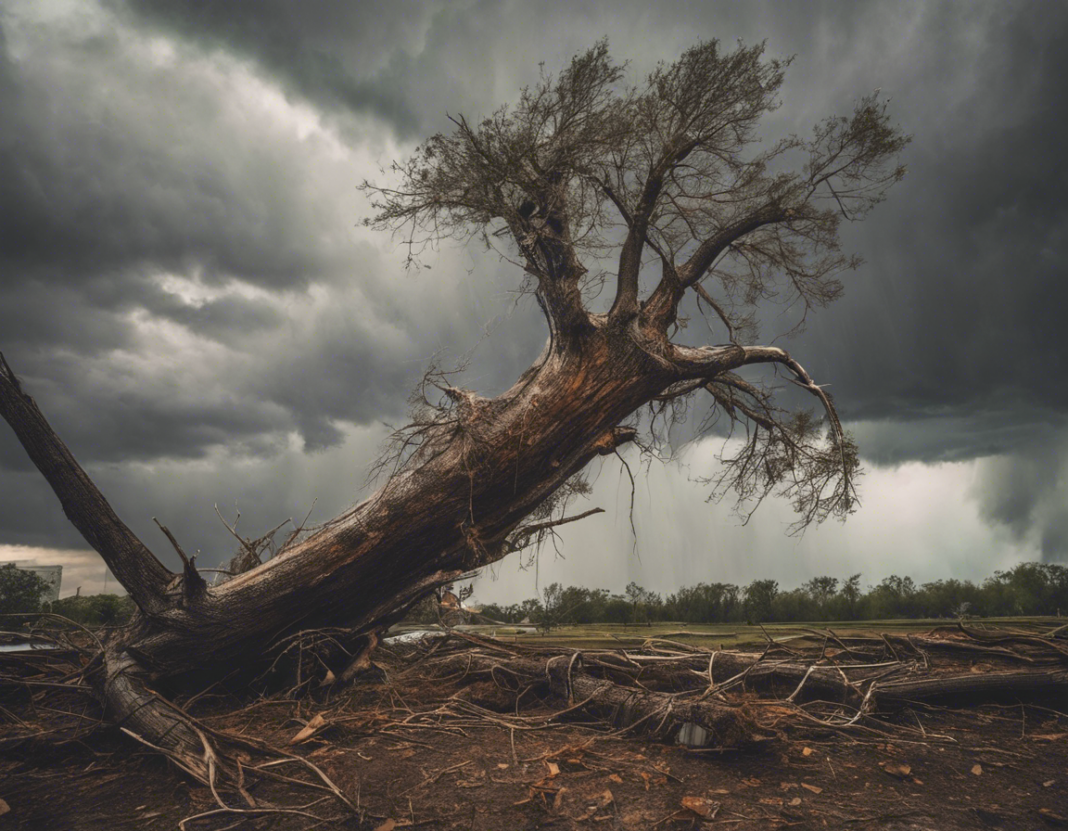Introduction
Trees are an essential part of the natural environment, providing us with clean air, shade, and beauty. However, during storms, trees can become a significant hazard, with strong winds and heavy rain causing them to break and fall. The sight of a large tree breaking during a storm can be terrifying, but understanding why this happens and what can be done to prevent it is crucial for ensuring safety and minimizing damage.
Why Do Trees Break During Storms?
- Root System: One of the primary reasons trees break during storms is due to problems with their root systems. Shallow roots, root rot, compacted soil, or damage to roots can all weaken a tree’s stability, making it more susceptible to breaking in strong winds.
- Weak Branches: Trees with weak or diseased branches are also at risk of breaking during storms. If branches are not pruned regularly or if there are signs of decay or disease, they may not be able to withstand the force of a storm.
- Wind Exposure: Trees that are exposed to strong winds regularly, such as those in open areas or on hilltops, are more likely to break during storms. The constant pressure from the wind can weaken the tree’s structure over time, making it more vulnerable to breaking.
- Age: Older trees are more prone to breaking during storms, as their wood may have decayed or become brittle over time. Younger trees are generally more flexible and able to bend with the wind, reducing the risk of breakage.
- Species: Certain tree species are more susceptible to breaking during storms than others. Trees with a shallow root system, like pines, or those with heavy branches, like oaks, are more likely to break under pressure.
Preventing Tree Breakage During Storms
- Regular Inspections: Conduct regular inspections of trees on your property to check for signs of disease, decay, or damage. Look for cracks in the trunk, dead branches, or leaning trees, as these could indicate a problem.
- Pruning: Regular pruning can help remove weak or diseased branches, improving the overall health and structure of the tree. Prune trees before the storm season to reduce the risk of breakage during inclement weather.
- Mulching: Mulching around the base of trees can help improve soil quality, prevent compaction, and protect the roots from damage. Healthy roots are essential for a tree’s stability during storms.
- Support Systems: Installing support systems like cables or braces on large or structurally weak trees can help reduce the risk of breakage during storms. Consult with a certified arborist to determine the best support system for your trees.
- Planting: When planting new trees, choose species that are more resistant to breakage during storms. Avoid planting trees in areas that are prone to strong winds or where the soil is compacted.
- Professional Help: If you are unsure about the health or stability of a tree on your property, consult with a certified arborist for an assessment. They can provide recommendations for maintenance or removal to ensure safety during storms.
What to Do If a Tree Breaks During a Storm
- Safety First: If a tree breaks during a storm, prioritize safety. Stay away from the tree and any power lines that may be affected. If the tree has fallen on a structure, evacuate the area and call emergency services.
- Assessment: Once it is safe to do so, assess the damage caused by the fallen tree. Check for any injuries, structural damage, or hazards that may need immediate attention.
- Cleanup: Clearing fallen trees can be dangerous and should be done carefully. Use proper equipment, like chainsaws and ropes, and consider hiring a professional tree removal service for large or hazardous trees.
- Repair: After the tree has been removed, assess any damage to structures or property. Repair any structural damage and consider planting a new tree in its place, choosing a species that is more suitable for the area.
- Prevention: Learn from the experience and take steps to prevent future tree breakage during storms. Regular maintenance, inspections, and proactive measures can help protect your property and ensure safety during inclement weather.
Frequently Asked Questions (FAQs)
- How can I tell if a tree on my property is at risk of breaking during a storm?
- Look for signs of decay, disease, or damage, such as cracks in the trunk, dead branches, or leaning trees. Trees with shallow roots or weak branches are also at higher risk.
- Do all trees need to be pruned regularly to prevent breakage during storms?
- While not all trees require regular pruning, it is recommended to prune trees with weak or diseased branches before the storm season to reduce the risk of breakage.
- Can I remove a tree on my property myself if it breaks during a storm?
- It is not recommended to remove fallen trees yourself, especially if they are large or near power lines. Hire a professional tree removal service to safely remove the tree and prevent further damage.
- What should I do if a tree falls on my house during a storm?
- Evacuate the area immediately and call emergency services. Do not attempt to enter the building until it has been deemed safe by authorities.
- How much does it cost to hire a professional tree removal service?
- The cost of hiring a tree removal service varies depending on the size of the tree, its location, and the extent of the damage. It is best to request quotes from multiple companies before making a decision.
- Are there regulations or permits required to remove trees on private property?
- Regulations regarding tree removal on private property vary by location. Check with your local municipality or arborist for information on permits or restrictions before removing trees on your property.






